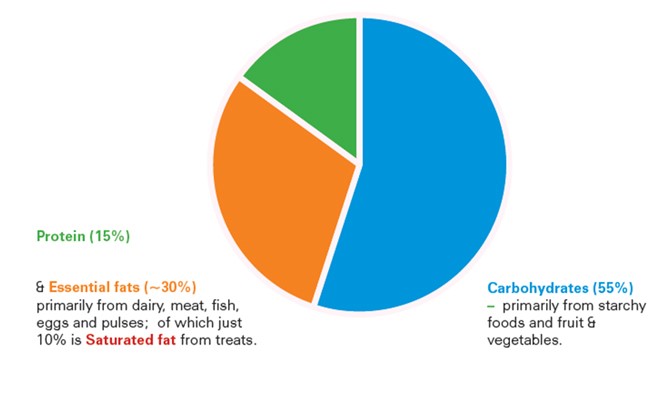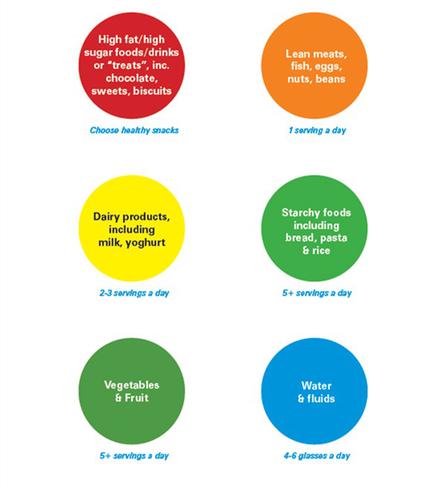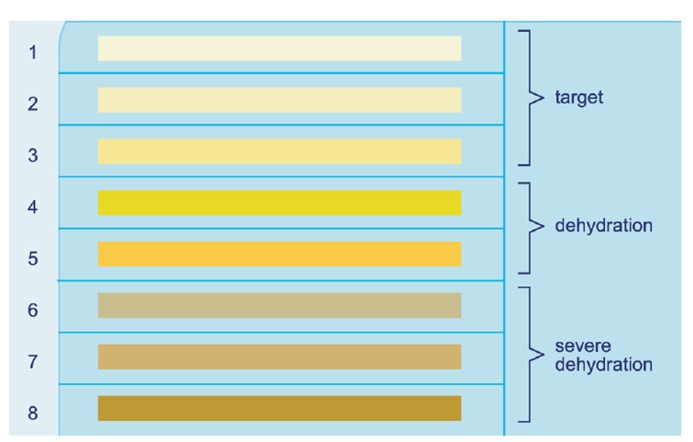NYSA
NYSA
JAGS NETBALL
SOUTH FLORIDA AND NORTH FLORIDA
Sport Science
• Nutrition
Nutrition
What is the best pre and post training snack?
The main energy source used in a high intensity training session or netball game is stored carbohydrate, or muscle glycogen. When training, muscle groups will also have been put under some mechanical stress, resulting in muscle damage. Research has shown that most optimal recovery is achieved when a carbohydrate and protein snack is consumed within 20-30 minutes after the session
• Nutrition / Refueling
Nutrition / Refueling
Balanced Diet
A balanced diet contains macro- and micro-nutrients in appropriate quantities for good health. Each nutrient has a specific role and may be found in certain food types, as highlighted in the information that follows.
Macro-nutrients:
Carbohydrates
• Provide fuel for exercise and daily tasks, whilst also being a source of fibre, vitamins and minerals.
Provide fuel for exercise and daily tasks, whilst also being a source of fibre, vitamins and minerals.
• Breads, potatoes, cereals, pasta, rice, noodles, fruits and vegetables (fresh, frozen, tinned or dried).
Breads, potatoes, cereals, pasta, rice, noodles, fruits and vegetables (fresh, frozen, tinned or dried).
Protein
• Provide the building blocks required by muscles to grow, repair and recover, whilst also being additional sources of some vitamins and minerals.
Provide the building blocks required by muscles to grow, repair and recover, whilst also being additional sources of some vitamins and minerals.
• Red meat, poultry, fish, eggs, nuts, beans, pulses, meat substitutes, milk, yoghurts and cheese.
Red meat, poultry, fish, eggs, nuts, beans, pulses, meat substitutes, milk, yoghurts and cheese.
Fats
• Are broken down into essential, healthy (poly- and mono-unsaturated) fats and non-essential, unhealthy (saturated, trans or hydrogenated) fats.
Are broken down into essential, healthy (poly- and mono-unsaturated) fats and non-essential, unhealthy (saturated, trans or hydrogenated) fats.
• Butter, margarine, oil, mayonnaise, biscuits, cakes, puddings, crisps, chocolate, pastries.
Butter, margarine, oil, mayonnaise, biscuits, cakes, puddings, crisps, chocolate, pastries.
NYSA Netball Education Solutions
Utilizing the best netball/sport resources from around the world
The information below is Not to be used in place of doctor's recommendation
Recommended Daily Intake
• Hydration
Hydration
Health
Water and fluids have many roles in the body, including:
• transporting nutrients around the body.
transporting nutrients around the body.
• joint lubrication.
joint lubrication.
• digestion & absorption of food.
digestion & absorption of food.
• removal of waste products.
removal of waste products.
• cooling the body.
cooling the body.
As a general guideline, young athletes need 4-6 glasses of water a day, however environmental conditions and activity levels may demand greater fluid intake. For example, extra fluid is needed in summer when they are seated in hot classrooms or taking part in school sports day. Young athletes should be encouraged to take their own water bottles to school and all training sessions or games.
While encouraging young athletes to drink more fluids, care is needed that they do not over-consume prior to a meal as this may mean that they feel full and so they may not eat sufficient food, total energy and nutrients to meet their needs for growth, repair and future activities.
• Performance
Performance
During all types of exercise, heat is produced by the body which then takes steps to cool down by sweating. The sweat then evaporates and cools the body. You cannot stop your body losing fluid by sweating but you can prevent it from becoming dehydrated.
The amount of fluid lost as sweat varies between individuals and is dependent on the following factors:
• Exercise intensity - the harder you train, the more fluid you will require.
Exercise intensity - the harder you train, the more fluid you will require.
• Exercise duration - the longer your training session or competition, the more fluid you will require.
Exercise duration - the longer your training session or competition, the more fluid you will require.
• Temperature - you require more fluid in hotter weather.
Temperature - you require more fluid in hotter weather.
• Humidity - you need more fluid in humid conditions.
Humidity - you need more fluid in humid conditions.
• Hydration status - adequate hydration before exercise will reduce the risks of dehydration.
Hydration status - adequate hydration before exercise will reduce the risks of dehydration.
• Training status - endurance training helps the body to maintain fluid balance.
Training status - endurance training helps the body to maintain fluid balance.
• Type of clothing - e.g. multiple layers of clothing prevent evaporation of sweat and result in increased body temperature.
Type of clothing - e.g. multiple layers of clothing prevent evaporation of sweat and result in increased body temperature.
• Individual person - two people can do the same exercise together at the same time and one may sweat at a greater rate than the other, e.g. larger people generally need more fluid than smaller people.
Individual person - two people can do the same exercise together at the same time and one may sweat at a greater rate than the other, e.g. larger people generally need more fluid than smaller people.
So, it is important that all active individuals are aware of their own hydration levels and what works best for them in terms of staying hydrated or rehydrating after exercise.
It is important to know that players on a netball court on a cold, wet winter day can also become dehydrated as their body works extra hard to stay warm and perform exercise at the required intensity.
• Hydration
Hydration
Some useful tips for fluid replacement are:
• young athletes should arrive at training or a match fully hydrated and top up every 15-20 minutes.
young athletes should arrive at training or a match fully hydrated and top up every 15-20 minutes.
• remember to drink before, during and after training; little and often is best.
remember to drink before, during and after training; little and often is best.
• carry a full drinks bottle in your kit bag at all times for training and matches.check the availability and suitability of fluids at training sites and competition venues.
carry a full drinks bottle in your kit bag at all times for training and matches.check the availability and suitability of fluids at training sites and competition venues.
• drink during scheduled breaks between training, or breaks in matches/competitions as stoppages in play allow.
drink during scheduled breaks between training, or breaks in matches/competitions as stoppages in play allow.
• thirst is a poor indicator of the need for fluid so drink before you are thirsty to ensure adequate fluid intake.
thirst is a poor indicator of the need for fluid so drink before you are thirsty to ensure adequate fluid intake.
• greater fluid intake may be achieved using flavoured and/or chilled drinks.
greater fluid intake may be achieved using flavoured and/or chilled drinks.
How to check if you’re hydrated or not…
A basic way of checking if you are well hydrated or not is to look at the color of your urine. The chart below gives a rough idea of what you should be looking for – in general, aim for your pee to be pale like straw. In particular, pay attention to how your urine color changes from before exercise to after exercise – going from light to dark suggests that you are not drinking enough when you exercise.
However, it is important that you do not only drink water during exercise of long duration (60mins+) or of high intensity.
Why? When you lose sweat during exercise, essential salts are also lost from your body in that sweat (your eyes may sting if you get sweat in your eye!).
These salts need to be replaced so that your body can actually absorb the water you drink; otherwise the water will simply make you need to go running to the loo during training!
THE SKY IS THE LIMIT


